Green architecture – naked Stables Private Reserve
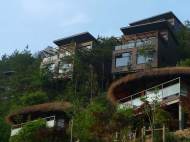 In our previous article regarding green architecture, we wrote about a part of naked Retreats named naked Home Village – a rustic resort on Moganshan mountain in Zhejiang Province, just 200km from Shanghai. Their new venture which opened last month is named naked Stables Private Reserve – a luxury resort built to become the first LEED Platinum certified resort in Asia.
In our previous article regarding green architecture, we wrote about a part of naked Retreats named naked Home Village – a rustic resort on Moganshan mountain in Zhejiang Province, just 200km from Shanghai. Their new venture which opened last month is named naked Stables Private Reserve – a luxury resort built to become the first LEED Platinum certified resort in Asia.
Designed by Delphine Yip from the Ben Wood Studio Shanghai, the naked Stables Private Reserve is a sustainable Afro-Asian themed eco-resort of luxury tree-top villas and rammed earth huts. It lies on 60 acres of its own private valley which is surrounded by a large reservoir, bamboo and tea plantations, and small farming villages, some ten kilometers down the valley from naked Home Village.
naked Stables Private Reserve showcases a combination of traditional and modern building. Both the interior and exterior designs maximize the stunning hillside views and a sense of luxurious natural living, while simultaneously minimizing the impact on the natural environment. Dining within the resort includes an 80-seat Afro-Asian restaurant named Kikaboni (meaning ‘organic’ in Swahili), overlooking the reservoir, It also has Clubhouse Cafe, a Pool Bar and Bistro, Wellness and Spa Centre, Conference Centre, and a Children’s Play and Daycare Centre named Little Shoots, and Stables.
40 Earth Huts and clubhouse are built with modern rammed earth walls using compressed mud from the local area, resulting in an environmentally friendly structure and striking colored striations and design. The techniques used in their build originate from the area, including stonework, buildings made entirely from bamboo and employing some of the few remaining elder local craftsmen with skills in traditional rammed earth walls making, which have the additional benefit of providing excellent insulation qualities.
30 Tree-top Villas offer two, three or four en-suite bedroom lay-outs over two levels, with high ceilings and floor-to-ceiling glass windows giving unobstructed views over the valley. All rooms and villas are equipped with high-speed wireless Internet and other multimedia and entertainment commodities most of are used to in our lives. Spa showers, all-natural bath products, signature bedding and on-call butlers enhance the luxury experience.
Site disturbance in the forest was minimized by the use of stilt-borne treetop villas that utilize pre-fabricated structurally insulated panels (SIPs) manufactured by a Canadian company Quacent which has a factory in Dalian, a major city and seaport in the south of Liaoning province, Northeast China. Aside great insulating properties, SIPs are reducing construction work and waste on site. In order to enhance insulation, all objects in the resort have low-e double glazed windows in imported ROTO windows hardware from Germany.
Efficient lighting fixtures are installed in order to conserve energy. Along with passive design to reduce energy demand naked have installing electricity sub-meters on the individual buildings in order to inform guests about their energy use.
Rain water runoff collection systems for roof and road are connected with a grey water recycling system which diverts it for use in toilet flushing. All black water is treated before being discharged.
Aside sustainable features of the naked Stables Private Reserve, they have also made a commitment to the local community by generating job opportunities, and contributing to local economies. In order to preserve air quality, the paint used inside objects is low or no VOC, smoking is prohibited indoors, and motor vehicles are not permitted inside the resort. Food is locally grown and purchased as close to its source when physically possible.

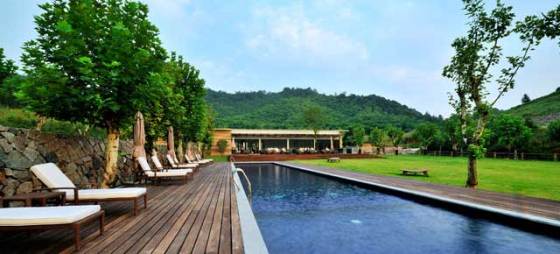
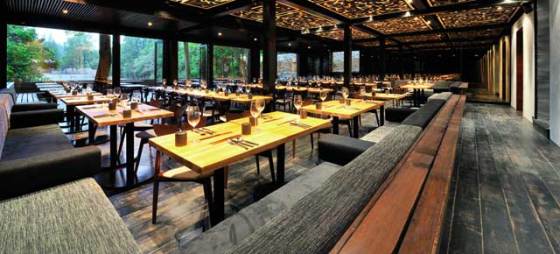
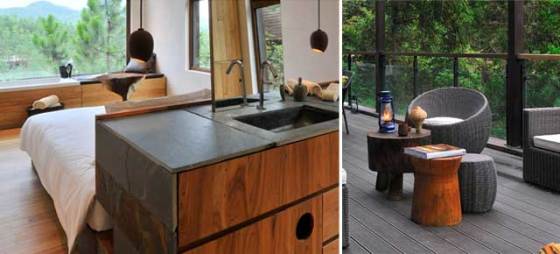
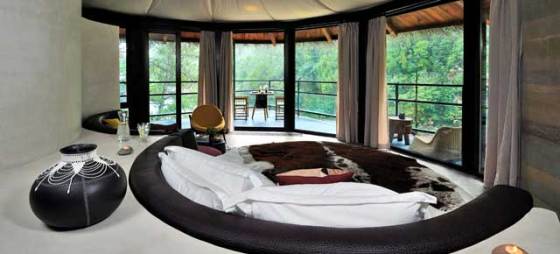








Beautiful!
It looks like a very relaxing and luxurious. I can’t believe it is sustainable, and I’m happy that sustainable projects like this are growing in China where they didn’t pay much attention to sustainability during development.